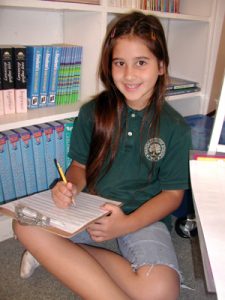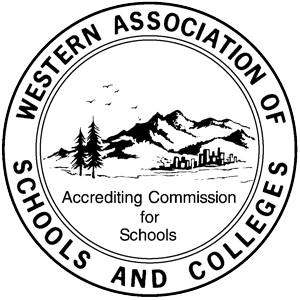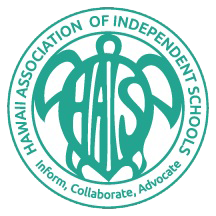Our Language Arts program consists of reading, writing, speaking, and listening. Every day, teachers create opportunities for students to express themselves and practice their developing skills. Student projects, including book reports, biographies, science fair exhibits, and research papers are on display, and classes are alive with oral reports, Readers’ Theater, and lively conversation. Literacy Day, with our Vocabulary Parade, is a popular annual event that showcases language arts.
Research shows that reading for pleasure makes a big difference to children’s educational performance. Likewise, evidence suggests that children who read for enjoyment every day develop a broader vocabulary, increased general knowledge, and a better understanding of other cultures. In fact, reading for pleasure is more likely to determine whether a child does well at school than their social or economic background.
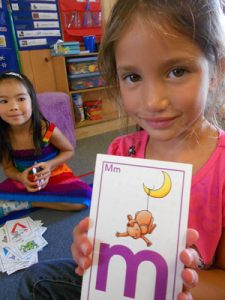 ‘Ohi’a K/1st Multiage ~ Reading Readiness
‘Ohi’a K/1st Multiage ~ Reading Readiness
Reading is the most important skill developed in ‘Ohi’a class. Students begin with reading readiness and move on to extend their phonemic awareness, decoding skills, sight word recognition, and fluency.
The focus of reading readiness is building a foundation in these three key areas:
- Phonemic Awareness ~ distinguishing the different sounds in a spoken word
- Letter recognition ~ knowing different letter shapes and the correct name for each letter
- Phonics ~ understanding the relationship between letters and the sounds they stand for
Over the course of the two-year ‘Ohi’a program, students move from developing the fine motor skills needed to manipulate a pencil to writing multiple sentences about a single topic.
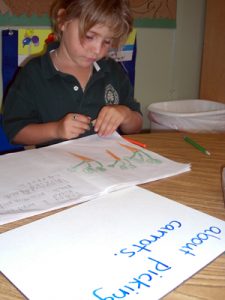 Students write daily through various activities, including journaling. Teachers model writing and take dictation. Specific writing skills are taught in whole group and individual instruction, including with kinesthetic techniques by using manipulatives such as clay, rice, sand, and so forth. Language mechanics—spelling, grammar, punctuation, capitalization, and usage—are emphasized and taught directly; however, students also free write in order to express themselves creatively.
Students write daily through various activities, including journaling. Teachers model writing and take dictation. Specific writing skills are taught in whole group and individual instruction, including with kinesthetic techniques by using manipulatives such as clay, rice, sand, and so forth. Language mechanics—spelling, grammar, punctuation, capitalization, and usage—are emphasized and taught directly; however, students also free write in order to express themselves creatively.
‘Ohi’a students are learning to articulate ideas and concepts and to differentiate between making statements and asking questions. Through consistent direction and teacher intervention, students learn to take turns when speaking, respect other speakers, listen to directions, and follow instruction. Students practice listening for information in presentations, videos, and CDs. They develop oral presentation skills by sharing writing pieces, group reading, and at “share time.”
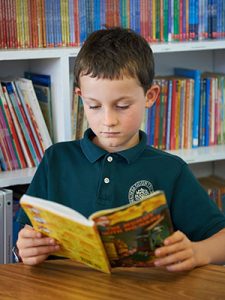 Koai’a 2nd/3rd Multiage ~ Building Literacy
Koai’a 2nd/3rd Multiage ~ Building Literacy
Students build literacy through daily practice with reading, writing, speaking, and listening.
Daily reading is vital to building independence and reading skills, such as fluency, comprehension, and accuracy. In addition to reading each day in class, children are expected to read at home; daily reading makes up the majority of homework in Koai’a.
Students read chapter books in small groups. As they read, they engage in activities to improve reading skills. Some groups may work on fluency, decoding and phonics, while other groups practice identifying literary themes and using inference. All of these skills have been proven to help students reach meta-cognition, or a high level of critical thinking about what they have read and how they understood it. What’s more, by reading novels in small groups, students gain conversation skills and confidence in reading and responding aloud.
Additionally, a wide range of fiction and non-fiction literature is read aloud and discussed with the entire class. These novels expose students to higher level vocabulary, model practices for reading and understanding novels, and relate to our values education curriculum.
Students regularly engage in Writers’ Workshop, understanding writing as a process that moves through the stages of pre-writing, drafting, revising, peer editing, conferencing, final drafting and publishing. Students are encouraged to use illustrations and invented spelling in the pre-writing and drafting stages to help express ideas and expand stories.
Koai’a students write every day. Specific writing skills, including the writing process, are taught utilizing the Step Up to Writing program and other resources. The Author’s Resource Folder (ARF) is a valuable tool in teaching student independence with writing and spelling. Language instruction (writing conventions, capitalization, punctuation, and grammar) is embedded in the writing curriculum and taught in the context of the students’ writing.
The Handwriting Without Tears curriculum is used for handwriting instruction — print and cursive. The expectation is for all students to effectively communicate in writing using neat, legible handwriting.
Koa 4th/5th Multiage ~ Reading to Learn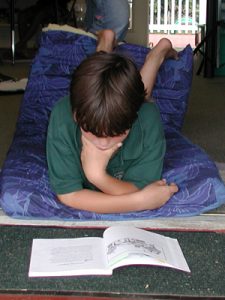
Students at this level are moving beyond decoding towards independent reading; the emphasis shifts from learning to read to reading to learn. Students read a variety of fiction and nonfiction materials throughout the year, including novels, short stories, informational articles, and poetry. Specific reading strategies and skills are taught on an ongoing basis.
Koa students write every day for a variety of purposes. They learn more advanced techniques, still using the Step Up to Writing program and other resources, now focusing on specific writing skills and strengthening their written work through editing and revision, sometimes collaboratively. A major objective is ensuring that students can plan and write effective paragraphs. Journaling, blogging, creative writing, and poetry are also integrated into the writing program.
Correct spelling and the ability to understand a wide variety of words and use them well are essential skills. In Koa, students learn to use resources, such as a personal spelling dictionary and words on their assignments or classroom posters, to spell words correctly while writing. Instruction in Greek and Latin affixes helps students develop their vocabulary as they learn these “puzzle pieces” that make up many words in the English language.
Students have many opportunities to develop and practice speaking and listening skills, both for public speaking and for clearly expressing themselves in discussion. They present oral reports and presentations regularly across the curriculum as a means to demonstrate learning and to strengthen their public speaking. With instruction and support, they learn to clearly express their ideas and articulate details and evidence. They practice being active, respectful, and supportive listeners.
Technology integration
Koa students regularly use Google Docs and other online tools to publish final versions of their writing, posting to their password-protected blog. This allows students to share work with a limited and controlled authentic audience beyond the classroom walls.

